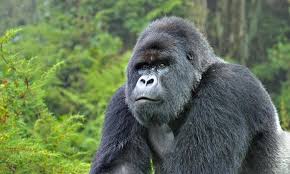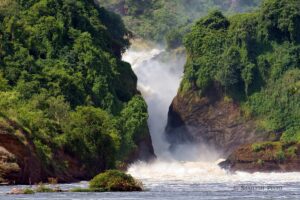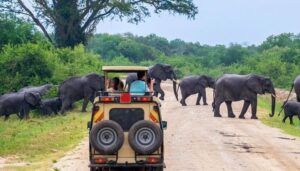Here on Tuesday, Tom Butime Ugandan Minister of Tourism, Wildlife and Antiquities revealed during the launch about dissemination of Tourism Industry Performance 2023.
“Uganda’s tourism revenue for the year ending 2023 increased to more than 1 billion U.S. dollars from about 687,200 million dollars registered in the year ending 2022, which he attributed to massive tourism promotion by the ministry and other players.” The minister says.
In 2023, the report shows that international tourism arrivals reached about 1.3 million up 56.5 percent from 2022. Arrivals from Africa continue to dominate Uganda’s inbound tourism with a share of 89.2 percent.
One of Uganda’s major foreign exchange earners, contributing approximately 5 percent to the country’s gross domestic product, according to data from the Ministry of Finance, Planning and Economic Development is tourism.
Attractions in Uganda
Bwindi Impenetrable national park.
 Bwindi impenetrable national park is located in south western part of Uganda neighbouring volcano national park in Rwanda and Virunga national park in DRC. The park is a home of over 450 endangered mountain gorillas with 25 gorilla families which are located four sectors that is Ruhija, Rushaga, Nkuringo and Buhoma. Bwindi park is a UNESCO Heritage site which is managed and protected by Uganda Wildlife Authority. Besides the park being a home for gorillas, it also provides habitat for 120 species of mammals, 350 species of birds, 310 species of butterflies, 27 species of frogs, chameleons, geckos, and many endangered species.
Bwindi impenetrable national park is located in south western part of Uganda neighbouring volcano national park in Rwanda and Virunga national park in DRC. The park is a home of over 450 endangered mountain gorillas with 25 gorilla families which are located four sectors that is Ruhija, Rushaga, Nkuringo and Buhoma. Bwindi park is a UNESCO Heritage site which is managed and protected by Uganda Wildlife Authority. Besides the park being a home for gorillas, it also provides habitat for 120 species of mammals, 350 species of birds, 310 species of butterflies, 27 species of frogs, chameleons, geckos, and many endangered species.
Mount Rwenzori national park.
Mount Rwenzori national park is a UNESCO Heritage site that is managed and protected by Uganda Wildlife Authority. The park range of mountains in eastern equatorial Africa, bordering between Uganda and the Democratic Republic of the Congo. The highest peak of the Rwenzori reaches 5,109 metres (16,762 ft), and the range’s upper regions are permanently snow-capped and glaciated.
Mgahinga national park
Mgahinga national park lies in virunga conservation area which comprises with volcano national park and Virunga national park. The park is known for primate species like gorilla family that is Nyakagei and golden monkeys however bird species, butterfly species are spotted within the park. The park covers an area of 33.7% located in south western part of Uganda near Bwindi impenetrable national park.
Murchison falls national park.

Murchison falls National Park is the largest park in Uganda covering an area of 3893sqkm. The park lies is located in north-western Uganda, it spreads inland from the shores of Lake Albert, around the Victoria Nile, up to the Karuma Falls. The park is bisected by the Victoria Nile from east to west for a distance of about 115 kilometres (71 mi).
The park is the location of the Murchison Falls, where the waters of the Nile flow through a narrow gorge only 7 metres (23 ft) wide before plunging 43 metres (141 ft).
The park is a home of big five mammals that is Rhino, leopard, lion, elephant, and buffalos however other mammal species are spotted water bucks, warthogs, giraffes, Uganda kobs and various bird species like grey crowned crane, long horned billed, turacos, shoebill and many more.
Mount Elgon national park
Mount Elgon national park is a national park in Kenya and Uganda that lies 140 kilometres (87 mi) northeast of Lake Victoria. The park covers an area of 1,279 square kilometres (494 sq mi). The Ugandan part of the park covers 1,110 km2 (430 sq mi) while the Kenyan part covers 169 km2 (65 sq mi). The Kenyan part of the park was gazetted in 1968, the Ugandan part in 1992. The park is the best destination for hiking and Elgon’s slopes support a rich variety of vegetation ranging from montane forest to high open moorland studded with the giant lobelia, groundsel and heather plants.
Semuliki national park.
Semuliki national park is a national park in Bwamba County, a remote part of the Bundibugyo District in the Western Region of Uganda. The park is protected and managed by Uganda Wildlife Authority and it is one of the richest areas of floral and faunal biodiversity in Africa, with bird and butterfly species being especially diverse. The park is a tropical forest and is a home to primate species like chimpanzees, monkeys, baboons, various bird species, mammal species however is best known for female and male hot springs.
Queen Elizabeth national park.

Queen Elizabeth national park is the second largest park in Uganda located in south western part of Uganda spanning the districts of Kasese, Kamwenge, Rubirizi, and Rukungiri. QENP occupies an estimated 1,978 square kilometres (764 sq mi). The park is known for its abundant wildlife, including African elephant, African buffalo, Ugandan kob, hippopotamus, topi, waterbuck, warthog, giant forest hog, Nile crocodile, leopard, spotted hyena, chimpanzee and lion. Overall, the park is home to 95 mammal species and over 600 bird species
Kidepo valley national park.
Kidepo valley national park lies in the rugged, semi-arid valleys between Uganda’s borders with south Sudan in the North West and only 5km from the eastern border of Kenya, some 700km from Kampala. The park was gazetted in 1962, it has a profusion of big game and hosts over 77 mammal species. The park contains two rivers – Kidepo and Narus – which disappear in the dry season, leaving just pools for the wildlife. The local communities around the park include pastoral Karamojong people, similar to the Maasai of Kenya, and the IK, a hunter-gatherer tribe whose survival is threatened.







